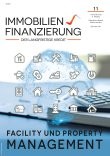Sie befinden sich hier: Home › Immobilien & Finanzierung › Themenschwerpunkte › Aufsätze › LEASEHOLD PROPERTY: ATTRACTIVE INVESTMENT OPPORTUNITIES WITH DIVERSE RISK DRIVERS
Aufsätze
02.11.2020
IMMOBILIENANLAGE
LEASEHOLD PROPERTY: ATTRACTIVE INVESTMENT OPPORTUNITIES WITH DIVERSE RISK DRIVERS

Mathias Pleissner, Foto: Scope Ratings

Dieser Artikel ist Teil unseres Online-Abo Angebots.
Immobilien & Finanzierung, Ausgabe vom 02.11.2020, Seite 523
Aufsätze
4,50 €
1716